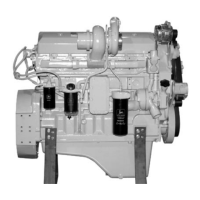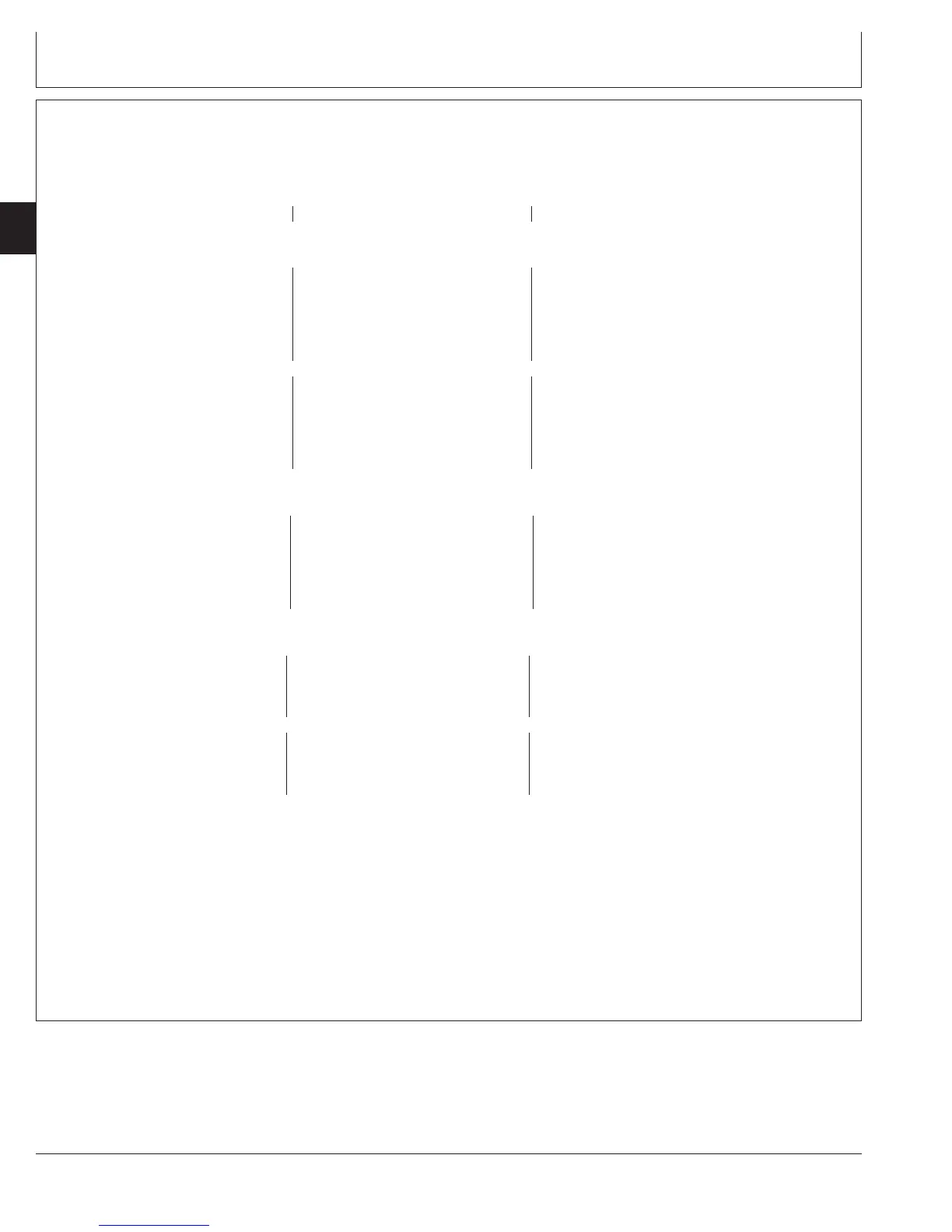Air Intake and Exhaust System
02
080
4
OUO1004,0000C21 –19–29NOV00–1/2
Turbocharger Failure Analysis
The following is a guide for diagnosing the cause of
turbocharger failures after removal from the engine.
Problem Possible Cause Suggested Remedy
COMPRESSOR HOUSING INLET DEFECTS
Foreign Object Damage Objects left in intake system. Disassemble and inspect intake system for foreign
objects (this group).
Inspect engine for internal damage.
Leaking and/or defective intake system. Inspect air intake system connections including air
filter; repair as required (this group).
Inspect air intake related engine components.
Compressor Wheel Rub Bearing failure. Determine if engine and/or operator contributed to lack
of lubrication, contaminated lubrication, excessive
temperature, or debris generating engine failure in
progress. Correct as required.
Manufacturing defects. Correct as required.
COMPRESSOR HOUSING OUTLET DEFECTS
Oil and/or Dirt in Housing Restricted air intake system. Inspect and clean air cleaner.
Prolonged periods of low rpm engine Check with operator to confirm conditions. (See
idling. Operator’s Manual.)
Defective oil seal ring. Repair as required (this group).
Restricted oil drain line. Inspect and clear oil drain line as required.
TURBINE HOUSING INLET DEFECTS
Oil in Housing Internal engine failure. Inspect and repair engine as required.
Oil leaking from compressor housing Verify that oil is in compressor housing and refer to
seal. “Compressor Housing Outlet Defects” as listed earlier
in this chart.
Center Wall Deteriorated Excessive operating temperature. Check for restricted air intake.
Check engine for overfueling.
Continued on next page
CTM100 (06APR04)
02-080-4
P
OWER
T
ECH
10.5 L & 12.5 L Diesel Engines
040604
PN=304

